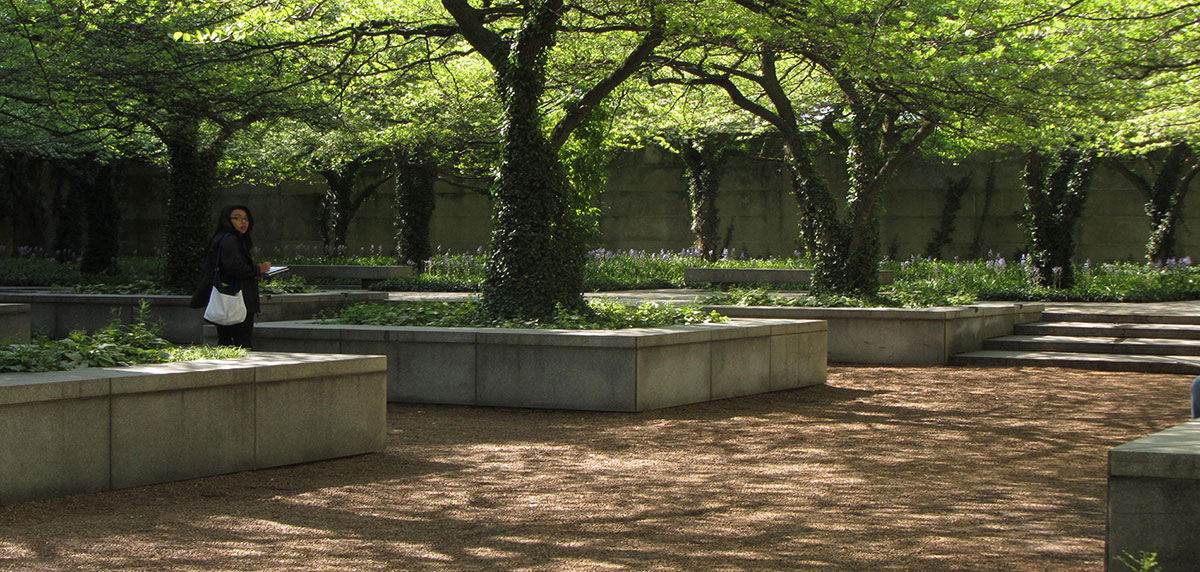Things about Landscapers
Things about Landscapers
Blog Article
Things about Landscapers
Table of ContentsThe smart Trick of Landscapers That Nobody is DiscussingAbout LandscapersAll about LandscapersSome Known Facts About Landscapers.The Of LandscapersLandscapers Fundamentals Explained
- A yard feature where water is stood for by an accumulated stone product, typically a gravel or granite. These are most frequently discovered in contemporary and Japanese garden design.- A rock or natural flagstone patio area, path, or sidewalk built without a concrete base. The base would be compressed gravel and the joints would be an aggregate or walkable ground cover. - A stone maintaining or free standing wall developed without the usage of mortar. - An underground structure that accumulate water and permits it to slow down percolate into the soil around it.
Landscape style that is suitable with a sites' setting in both appearance and sustainability without adverse impacts to the environment. Edging in the landscape is a line of separation that creates aesthetic interest in the yard by dividing one segment from an additional sector.
Areas can additionally have a sensation of "unit" offered by trees, other growings, fences, or displays. The landscape near the access to a building. A tree, hedge or creeping plant, trained to expand on a wall or fencing into a specific pattern. Particularly useful for fruit trees, making it simple to collect the fruit and having mess.
Landscapers - Truths

The element in a landscape style or area in a landscape that is implied to be most prominent. The focal factor can be a plant, boulder, statuary, collecting room, or various other landscape attribute.

All about Landscapers
Rock product, either rounded or fractured, that is reasonably little- typically 1" or much less. Low plants that are enabled or urged to spread over a location. Can refer to any "tough" yard elements consisting of statuary or stones yet a lot of frequently is used to refer to courses, patio areas, and walls.: Elevation distinction in between the degree of water in a fish pond (or the level of the pump if browse around this site it sits outside the fish pond) and the upper outlet of water which influences efficiency of the water pump in gph (gallons per hour). Dense bushes or trees that develop a fence, screen, or limit.
Fence boards that run flat, commonly used in contemporary or Japanese-inspired landscape styles. Proper usage of imaginary lines can assist the landscape really feel attached to the home and various other elements.
An even more kicked back yard dominated by curved instead than straight bed lines and a much less rigid structure. Traditional PNW landscapes are informal. A plant that spreads out more than desired, or into environments where it does damages. Rose city has a list of invasive plants that must not be mounted in landscapes since they can infect forests or waterways and be hard to regulate.
Excitement About Landscapers
Can consist of head positionings and coverage, pipeline sizing, GPM specifications, and products required to install this system. Certified expert that designs landscapes, coached in design and design as well as in horticulture.
The professional who prepares and develops landscape projects, normally at a domestic or small commercial degree with the major style impetus on plantings. Landscape developers normally have much less education than Landscape Architects and are not certified. A finished landscape style, describing all aspects for the new look at this site landscape. This usually takes the form of a drawing theoretically.
Calcium material utilized to increase the pH in soil, which will make it less hospitable to moss (Landscapers). A water limited HDPE product used beneath fish ponds, streams and waterfalls in water functions. Using several plantings of the very same variety to fill out an area in the landscape. This can reduce upkeep and water use in the yard.
A mix of concrete, sand, and water that is utilized in stone stonework for setting stones and joints. A layer of compost or bark dust used at the base of a plant. A mass growing of moss. A plant that was present in a geographic location before individuals started changing the landscape.
The Ultimate Guide To Landscapers
How the garden or a yard element is set up in partnership to an existing or brand-new feature or to an instructions. Yards that are not mowed yet expanded in landscapes as perennials.

Plants that offer seasonal passion and then pass away back in the winter. Cold season turf that is the most typical lawn grass in Rose city, OR and the rest of the PNW.An open roofed framework over a patio or various other landscape attribute.
The most typical landscape gravel in the PNW. Location of the landscape created to handle rain water until it can soak into the ground.
Producing click site a yard attribute consisting primarily of rocks with growings that match and can grow in the rocky environment. Sprinkler head style that rotates a stream of water across an area.
Rumored Buzz on Landscapers

Report this page